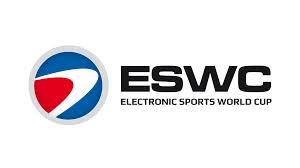From the mid to late 1990’s, there was a massive increase globally in the popularity of personal computers and with that came a huge rise in the numbers of people accessing the internet and realising the potential for entertainment that it provided. Games started to be developed which included multiplayer support. This meant that two or more people could play the single player game against the computer or online in either single player or team play environments. ‘Death match’ pitches the player into an arena (in the first person perspective). With weapon and health items available throughout the arena for collection at pre-programmed locations, the objective is to eliminate the avatar of an opponent. The defeated opponent will continue to respawn (on the death of an avatar the player is ‘reborn’ often with equipment penalties) until either a given frag limit is reached or time expires. A frag is the name given to the scoring of a point usually by inflicting damage on an enemy avatar. Games cannot end in a draw. Extra time is played if necessary.
Death match can be played between large numbers of people acting independently, or as a two person duel known as one versus one. Death Match became very popular over the internet with the release of games such as ‘Doom’, ‘Duke Nukem’ and ‘Quake’. The developers of the ‘Quake’ series of games (ID Software) introduced new game-types such as Team-Deathmatch (TDM) and Capture the Flag (CTF). In Capture the Flag a player must steal the flag of an opponent. The team flags are situated inside opposing defended bases and each must be seized from the enemy and returned to their own. With the wide range of multiplayer game-types available online games are becoming more popular around the world. Increasingly accelerating broadband speeds, life-like graphics, surround sound and even accurate physics in games are seeing them become increasingly popular and many people who play a game initially for the single player are being drawn into the multiplayer world.
Pioneers of multiplayer gaming arranged ‘LAN parties’ where a group of friends met with their computers and linked them together through Local Area Network (LAN) cables. This enabled them to play multiplayer games against each other. From these early get-togethers LAN tournaments were created which were hosted at much larger venues. Players could either win prizes in cash, equipment or just bragging rights. Tournaments also took place over the internet, but because of initially slow connection speeds LAN tournaments were far more preferable to the growing number of elite players. The first eSports tournament took place in 1997 and was hosted by the Cyberathlete Professional League (CPL) and was attended by approximately 300 competitors. Tournaments became much larger as their popularity began to grow and can today have thousands of spectators either watching at the venues on large video screens or over the internet via live coverage. The CPL has continued to grow and recently changed to a world tour format involving thousands of players.

*A typical organised LAN party
Other professional tournament organisations include the Electronic Sports World Cup (ESWC) and the World Cyber Games (WCG).


Death match can be played between large numbers of people acting independently, or as a two person duel known as one versus one. Death Match became very popular over the internet with the release of games such as ‘Doom’, ‘Duke Nukem’ and ‘Quake’. The developers of the ‘Quake’ series of games (ID Software) introduced new game-types such as Team-Deathmatch (TDM) and Capture the Flag (CTF). In Capture the Flag a player must steal the flag of an opponent. The team flags are situated inside opposing defended bases and each must be seized from the enemy and returned to their own. With the wide range of multiplayer game-types available online games are becoming more popular around the world. Increasingly accelerating broadband speeds, life-like graphics, surround sound and even accurate physics in games are seeing them become increasingly popular and many people who play a game initially for the single player are being drawn into the multiplayer world.
Pioneers of multiplayer gaming arranged ‘LAN parties’ where a group of friends met with their computers and linked them together through Local Area Network (LAN) cables. This enabled them to play multiplayer games against each other. From these early get-togethers LAN tournaments were created which were hosted at much larger venues. Players could either win prizes in cash, equipment or just bragging rights. Tournaments also took place over the internet, but because of initially slow connection speeds LAN tournaments were far more preferable to the growing number of elite players. The first eSports tournament took place in 1997 and was hosted by the Cyberathlete Professional League (CPL) and was attended by approximately 300 competitors. Tournaments became much larger as their popularity began to grow and can today have thousands of spectators either watching at the venues on large video screens or over the internet via live coverage. The CPL has continued to grow and recently changed to a world tour format involving thousands of players.

*A typical organised LAN party
Other professional tournament organisations include the Electronic Sports World Cup (ESWC) and the World Cyber Games (WCG).



